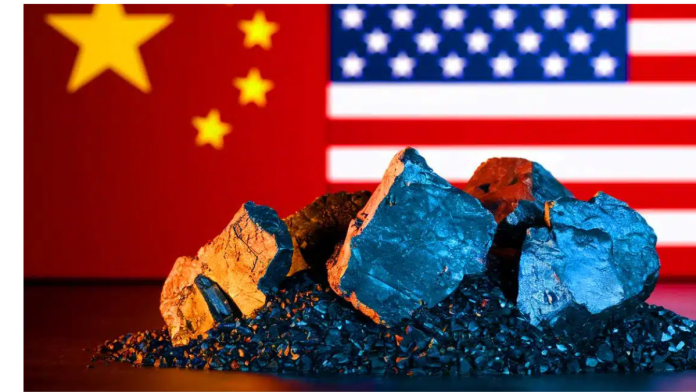Rare earth elements, or REEs, are a group of 17 minerals that include 15 lanthanides, scandium, and yttrium. They are considered critical minerals due to their unique magnetic, luminescent, and catalytic properties. These properties make REEs essential for modern technology, including electronics, renewable energy solutions, industrial machinery, medical devices, and advanced military systems.
Despite their name, rare earths are not extremely rare in the Earth’s crust. The term “rare” refers to the difficulty of finding concentrated deposits suitable for mining. These minerals are vital for permanent magnets used in motors, generators, hard drives, and other machinery, while also enabling devices to be smaller, more efficient, and durable. They play a critical role in high-tech applications like smartphones, computers, wind turbines, fuel cells, and electric vehicles. In defence, REEs are used in fighter jets, missiles, sensors, and other advanced military technologies.
China is the dominant player in the rare earth market. In 2023, the country accounted for roughly 70% of global mined production and 87% of refined production, with an estimated output of 240,000 tonnes. Other countries, such as Canada, Australia, and the United States, have significant deposits, but extracting, separating, and refining these minerals is technically complex and costly. China’s early investments in mining and refining infrastructure, combined with lower production costs, have allowed it to maintain a dominant position in the global supply chain.
U.S. to enforce 100% tariffs on Chinese imports after Beijing’s rare earth measures
US rare earth deposits and production capacity
The United States possesses substantial rare earth deposits, with the Mountain Pass Mine in California being the largest active site. The mine contains minerals like bastnäsite, which include cerium, lanthanum, neodymium, and europium. As of 2020, Mountain Pass accounted for approximately 15.8% of the world’s rare earth supply, with proven reserves estimated at 1.36 million tonnes of rare earth oxides at an average grade of 7%.
Other US deposits, such as the Halleck Creek site in Wyoming and exploratory areas in Arizona, exist but have not been fully developed. The main challenge is refining capacity. Raw ore must be processed before it can be used in advanced manufacturing, and the United States currently lacks sufficient facilities to meet global demand. Developing new mines and processing plants involves long timelines due to permitting, environmental regulations, and required investment. On average, it takes about 29 years to permit a new mine in the US.
US reliance on Chinese rare earths
Even with domestic deposits, the US relies heavily on China for refined rare earths. China’s advantage comes from its integrated supply chain, abundant high-grade deposits, and long-standing investments in mining and processing infrastructure. Efforts are underway to expand domestic production and magnet manufacturing, with plans to increase output from around 1,000 metric tons to 10,000 metric tons annually, but this remains far below China’s scale.
The lack of domestic refining capacity is the main bottleneck. Raw ore cannot be directly used in advanced manufacturing, and developing processing infrastructure requires significant investment and time. Until these systems are fully operational, the US continues to import refined rare earths from China, making supply chains for technology, energy, and defence sectors vulnerable to disruption.
U.S. weighs direct role in Greenland rare earths development through $50 million plan
Uses of rare earths in technology and defence
Rare earth elements are central to both civilian and military technology. They are widely used in electronics, including smartphones, televisions, and computers, as well as in clean energy technologies like wind turbines, fuel cells, and electric vehicles. Industrial applications include magnets, optical glass, and catalysts. In the defence sector, REEs are critical for sensors, missile systems, and precision-guided equipment.
China’s dominance in refining these minerals gives it considerable influence over global industries. Nations with limited domestic processing capabilities face potential risks if supply is disrupted. While other countries hold reserves, building the refining and manufacturing ecosystem necessary to match China’s capacity is complex, expensive, and time-consuming.
Strategic significance of rare earths globally
The situation highlights the strategic significance of rare earth elements. They are not simply industrial resources but essential for technological development, energy production, and national security. China’s control over rare earth production and refining has made these minerals a key point of tension in US-China relations, impacting industries and defense sectors worldwide.


